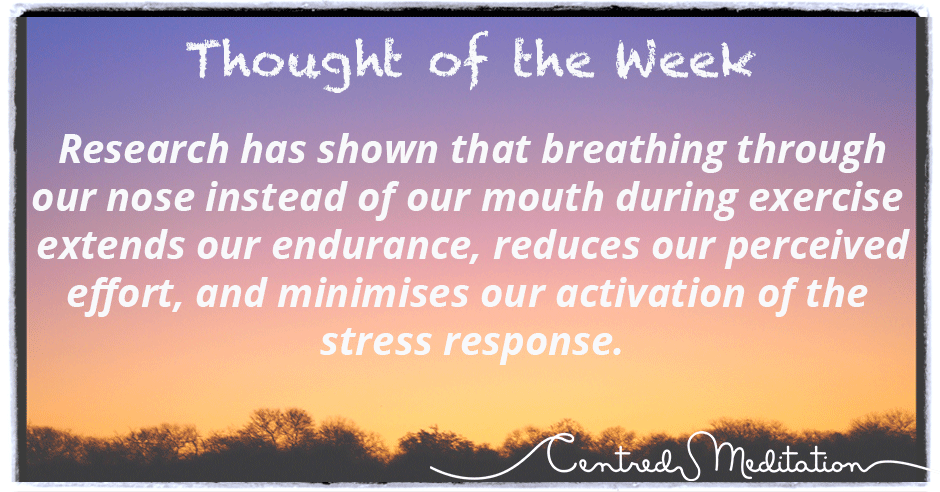Breathing through our nose instead of our mouth during exercise has a whole host of benefits.
First, a little lesson on anatomy…
We breathe in order to take air from the atmosphere into our lungs. Our lungs are designed to both extract the oxygen from the air and transfer it into our bloodstream, as well as release carbon dioxide from our bloodstream into the air. This is because oxygen is vital for all of the cells of our body to survive, and carbon dioxide can poison the body. It’s relevant to know that within our lungs themselves, various sections contain different nerve receptors. The lower sections have more parasympathetic calm nerve receptors (which we strive to activate during meditation), and the upper sections contain more sympathetic stress receptors (which we aim to reduce during meditation).
It’s better to breathe through our nose in general because…
Our nose has the important function of optimising the air we breathe for our body by filtering, warming, moisturising, and dehumidifying it. What’s more, when we breathe through our nose, more oxygen is efficiently delivered into a larger capacity of our lungs, including the lower sections (which contain more of the calming and repairing nerve receptors). These lower sections also happen to contain more blood so they have a higher ability to transfer more carbon dioxide out of the body.
During exercise, nose breathing instead of mouth breathing has been shown to…
- Lower heart rate and breath rate by a larger amount;
- Increase alpha brain activity (the brain waves produced during meditation and relaxation) by a higher degree;
- Increase more brain wave coherence (associated with calm and organised brain function);
- Activate the parasympathetic (calm) nervous system more and the sympathetic (stress) nervous system less;
- Increase production of nitric oxide (an important immune-boosting molecule in the body);
- Help us extend our endurance and recover quicker;
- Make us perceive that we have exerted less energy in the process.
So the next time you exercise (and every time after that), pick your nose as your breathing organ of choice to during the entire duration of your exercise regime. Keep in mind that it may take some time to build up this ability so don’t give up too easily.


